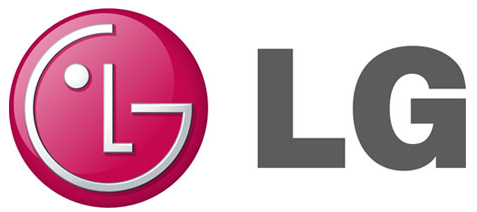LG TM05GTJN2 Car Telematics Device User Manual



VDC (Vehicle Domain Controller)
Telematics module device equipped in the JLR(Jaguar Land Rover) vehicles. In charge of wireless communications in LTE-A/LTE/WCDMA/GSM network Platform for Telematics Virtual Machine (VM) and other VMs based on Hypervisor TM05GTJN2 supports GSM850/1900, WCDMA B2/4/5, LTE B2/4/5/7/12/26, 2.4/ 5GHz WLAN (UNII 1, 3)
Service types which are provided by VDC
Voice service : eCall, bCall1) via TSP2)
SMS service : MO/MT SMS between Telematics VM – TSP2)
Data service : Telematics services between Telematics VM – TSP
Major functions of VDC (TM05GTJN2)
Multi-mode LTE, Wi-Fi 11ac-Client, Ethernet connection.
Micom for a vehicle interface and a power control, AP for an Ethernet interface and Wi-Fi operation Audio circuitry for Emergency Call and Breakdown Call.
Cellular
| Operating Frequency Band | |||||
| Common Name | Uplink | Downlink | GSM/EDGE | UMTS | FD-LTE |
| 2100 (B1) | 1920–1980 | 2110–2170 | |||
| 1900(B2) | 1850–1910 | 1930–1990 | V | ||
| 1800 (B3) | 1710–1785 | 1805–1880 | |||
| 850 (B5) | 824–849 | 869–894 | V | V | V |
| 2600 (B7) | 2500–2570 | 2620–2690 | V | ||
| 900 (B8) | 880–915 | 925–960 | |||
| 800(B20) | 832–862 | 791–821 | |||
| 850(B26) | 814–849 | 859–894 | V | ||
| 700(B28) | 703–748 | 758–803 | |||
Wi-Fi
| Mode/Band | Frequency Band (MHz) |
| 802.11b, g, n / 2.4GHz | 2412 ~ 2462 |
| 802.11a, n, ac / 5GHz | 5180~5240, 5745~5825 |
VDC (Vehicle Domain Controller) supports highly integrated multimode, multiband RF CMOS transceiver IC. It provides a single-chip solution for LTE carrier aggregation support up to 20 MHz+20 MHz for 2DLCA. For the WiFi, Qualcomm engine are used. Overall the VDC directly supports with up to 2 GSM bands, 3UMTS bands and 6 FDD-LTE bands with 2DLCA. Additional Qualcomm IC as QCA6574 support WiFi 11ac. VDC is operating with LGE shark antenna approved for use with the device.
RFx information
The strength of the RF field produced by the wireless module or modules embedded in the TCU is well within all international RF exposure limits known
at this time. Because the wireless modules embedded in the TCU emit less than the maximum amount of energy permitted in radio frequency safety standards and recommendations, the manufacturer believes these modules are safe for use.
Regardless of the power levels, care should be taken to minimize human contact during normal operation. This module should be remain more than 20 cm (8 inches) from the body when wireless devices are on and transmitting.
This transmitter must not be collocated or operated in conjunction with any other antenna or transmitter.
Operation is subject to the following two conditions:
- this module does not cause interference
- this module accepts any interference that may cause undesired operation.
Information for the integrator
The integrator must not provide information to the end user regarding how to install or remove this RF module in the user manual of the end product. The user manual that is provided by the integrator for end users must include the following information in a prominent location. To comply with FCC RF and IC RSS‐102 exposure requirements, the antenna used for this transmitter must be installed to provide a separation distance of at least 20 cm from all persons and must not be collocated or operated in conjunction with any other antenna or transmitter.
Approbation FCC
This module complies with FCC/IC rules.
FCC : Part 15, Part 22, Part 24, Part 27, Part 90
ISED : RSS-130, RSS-132, RSS-133, RSS-139, RSS-199, RSS-247
Furthermore, this device complies with FCC radiation exposure limits set forth for uncontrolled environments.
This module must be installed and operated with minimum distance of 20 cm between the radiating element and the user. This module must not be co-located with any other transmitters or antennas. To comply with FCC regulations limiting both the maximum RF output power and human exposure to RF radiation, the maximum antenna gain including cable loss in a mobile-only exposure condition must not exceed the values listed in the following table.
| Band | Frequency Range [MHz] | Maximum Antenna Gain[dBi] |
| GSM850 | 824~849 | -3.57 |
| GSM1900 | 1850~1910 | 0.01 |
| WCDMA(B2) | 1850~1910 | 0.01 |
| WCDMA(B4) | 1710~1755 | 0.33 |
| WCDMA(B5) | 824~849 | -3.57 |
| LTE(B2) | 1850~1910 | 0.01 |
| LTE(B4) | 1710~1755 | 0.33 |
| LTE(B5) | 824~849 | -3.57 |
| LTE(B7) | 2500~2690 | -3.61 |
| LTE(B12) | 699~716 | -2.61 |
| LTE(B26) | 814~849 | -4.30 |
To satisfy the FCC’s exterior labeling requirements, the following text must appear on the exterior of the end product.
Contains transmitter module FCC ID: BEJTM05GTJN2
Contains transmitter module IC: 2703H-TM05GTJN2
Changes or modifications to this equipment may cause harmful interference unless the modifications are expressly approved in the instruction manual. Users may lose the authority to operate this equipment if an unauthorized change or codification is made.
Note: If this module is intended for use in a portable device, additional testing will be required to satisfy the RF exposure and SAR requirements of FCC Part 2.1093 and RSS-102.
This device complies with part 15 of the FCC Rules.
Operation is subject to the following two conditions:
- This device may not cause harmful interference.
- this device must accept any interference received, including interference that may cause undesired operation.
Note: The OEM integrator is responsible for ensuring that the host product which is installed and operating with the module is in compliant with Part 15B unintentional Radiator requirements, please note that For a Class B digital device or peripheral, the instructions furnished the user manual of the end‐user product shall include the following or similar statement, placed in a prominent location in the text of the host product manual:
Note:This equipment has been tested and found to comply with the limits for a Class B digital device, pursuant to Part 15 of the FCC Rules. These limits are designed to provide reasonable protection against harmful interference in a residential installation. This equipment generates, uses and can radiate radio frequency energy and, if not installed and used in accordance with the instructions, may cause harmful interference to radio communications. However, there is no guarantee that interference will not occur in a particular installation. If this equipment does cause harmful interference to radio or television reception, which can be determined by turning the equipment off and on, the user is encouraged to try to correct the interference by one or more of the following measures:
- Reorient or relocate the receiving antenna.
- Increase the separation between the equipment and receiver.
- Connect the equipment into an outlet on a circuit different from that to which the receiver is connected.
- Consult the dealer or an experienced radio/TV technician for help.
Approbation IC
The device apply the following requirements persuant to RSS-247 additional requirement.
- the device for operation in the band 5150–5250 MHz is only for indoor use to reduce the potential for harmful interference to co-channel mobile satellite systems.
- for devices with detachable antenna(s), the maximum antenna gain permitted for devices in the bands 5250-5350 MHz and 5470-5725 MHz shall be such that the equipment still complies with the e.i.r.p. limit.
- for devices with detachable antenna(s), the maximum antenna gain permitted for devices in the band 5725-5850 MHz shall be such that the equipment still complies with the e.i.r.p. limits as appropriate.
- where applicable, antenna type(s), antenna models(s), and worst-case tilt angle(s) necessaryto remain compliant with the e.i.r.p. elevation mask requirement set forth in section 6.2.2.3 shall be clearly indicated.
WiFi Antenna Specification
| f[MHz] | value | f[MHz] | value |
| 2412 | 2.14 | 5150 | 3.96 |
| 2417 | 2.12 | 5200 | 3.39 |
| 2422 | 2.32 | 5250 | 2.47 |
| 2427 | 2.55 | 5300 | 3.67 |
| 2432 | 2.53 | 5350 | 3.67 |
| 2437 | 2.27 | 5400 | 3.07 |
| 2442 | 2.24 | 5450 | 3.96 |
| 2447 | 2.41 | 5500 | 4.07 |
| 2452 | 2.13 | 5550 | 4.74 |
| 2457 | 1.96 | 5600 | 5.74 |
| 2462 | 1.76 | 5650 | 6.28 |
| 5700 | 5.89 | ||
| 5750 | 6.21 | ||
| 5800 | 6.31 | ||
| 5850 | 5.81 | ||
| 5900 | 6.24 |